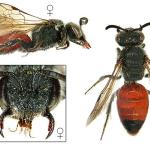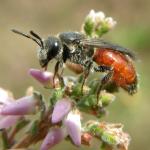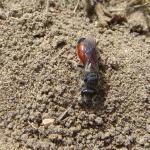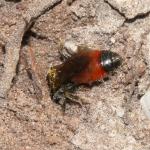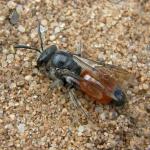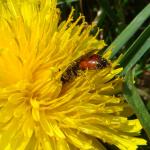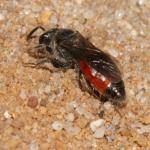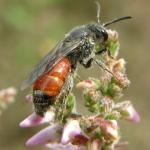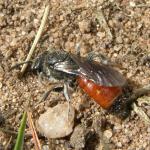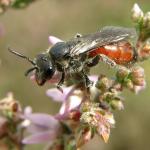Sphecodes pilifrons THOMSON 1870; Sphecodes brevicornis VON HAGENS 1874; Sphecodes volatilis SMITH 1879
Frequent in southern Britain, north to southern Scotland, although often coastal in Wales. Also occurs on the east coast of Ireland and in the Channel Islands.
Found widely in the Palaearctic region, from Europe north as far as Sweden, east to Siberia and also in north Africa.
This species is not regarded as being scarce or threatened.
Frequent in sandy habitats, including inland heaths and coastal sands, where its host occurs.
The female flies from April to September and the male from early July to September.
The species is a cleptoparasite of Andrena barbilabris (Kirby), a mining bee frequent on sandy soils. Other Andrena species, including A. wilkella (Kirby), have sometimes been implicated as hosts. The female S. pellucidus is found at the nest sites of A. barbilabris inspecting the loose sandy soil with her antennae and when a burrow is located by scent, it burrows into the sand, disappearing. The destruction of the host egg or young larva has not been observed.
The bee particularly visits Asteraceae, including thistles and mayweeds, for nectar only.
No data available.
2012


